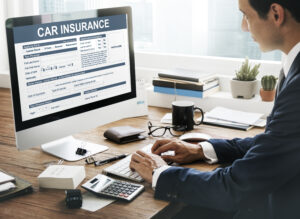
The ownership of a vehicle is dependent upon having car insurance. It provides financial security in the event of an accident or other unexpected events, such as theft or natural disaster damage. However, with so many different types of coverage and pricing, it can be tough to know what you’re paying for and why. In this post, we’ll go over the basics of car insurance coverage and rates so you can make an informed decision about your policy.
TYPES OF COVERAGE
When choosing a policy, there are numerous types of automobile insurance coverage to consider. These are some examples:
Liability Coverage: Liability coverage is required in most states and covers damages to another person’s property or injuries caused by another person in an accident in which you are at fault.
Collision Coverage: This coverage compensates for your own car’s damages in the event of an accident, regardless of who is at fault.
Comprehensive Coverage: Comprehensive coverage protects your car from non-collision accidents such as theft, vandalism, or weather-related damage.
Personal Injury Protection (PIP): Personal Injury Protection (PIP): Also referred to as PIP, this insurance covers your and your passengers’ medical costs and lost wages in the event of an accident.
Uninsured/Underinsured Motorist policy: This policy protects you if you are involved in an accident with someone who does not have insurance or has insufficient insurance to cover the losses.
When getting automobile insurance, it is critical to thoroughly assess the types of coverage you require. The more coverage you get, the higher your rates will be, but you will be better protected in the event of an accident.
FACTORS AFFECTING RATES
Insurance companies use a number of factors when establishing your auto insurance premiums. These elements are as follows:
Driving Record: One of the most important things that insurance companies consider when deciding your premiums is your driving history. Your rates will most likely be higher if you have a history of accidents or traffic offences.
Age and Gender: Younger and male drivers pay more for vehicle insurance because they are statistically more likely to be involved in an accident.
Location: Your auto insurance prices may be affected by where you live. Higher rates may occur in areas with high crime or accident rates.
Vehicle Type: The type of vehicle you drive might also have an impact on your rates. Cars with good safety ratings or low repair expenses may have lower rates, whereas pricey or high-performance vehicles may have higher rates.
Credit Score: Your credit score might also influence your vehicle insurance prices. People with higher credit ratings, according to insurance firms, are more responsible and less likely to file claims.
UNDERSTANDING YOUR POLICY
When purchasing automobile insurance, it is critical to read and comprehend the policy’s terms and conditions. This includes understanding your coverage options, deductibles, and liability limits.
The amount you must pay out of pocket before your insurance coverage kicks in is known as your deductible. If your deductible is higher, your rates will be less. Your limit of responsibility is the most your insurance provider will pay out in the event of an accident for damages or injuries. It is critical to select a liability limit that effectively protects you in the event of a major accident.
It’s also critical to understand what your policy covers and what it doesn’t. In the event of an accident, for example, if you have liability coverage but no collision coverage, your insurance will not pay for damages to your own automobile. Contact your insurance agent if you have any questions regarding your policy.
In conclusion, car insurance is an important aspect of owning a vehicle, but understanding the many types of coverage and costs may be difficult. Understanding the fundamentals of auto insurance coverage and prices allows you to make informed decisions about your policy and ensure that you have the necessary protection in the event of an accident.
It is critical to compare rates and coverage options from multiple companies when looking for vehicle insurance. You can utilize internet comparison tools to obtain quotes from several firms and compare their pricing and coverage options.
It’s also a good idea to check your policy on a frequent basis and make modifications as needed. For example, if you’ve recently paid off your car loan or made significant improvements to your vehicle, you may want to boost your coverage or lower your deductibles. The ultimate purpose of car insurance is to protect you and your valuables in the case of an accident or other unexpected incident. You may choose a policy that delivers the protection you require at a price you can afford by understanding the different types of coverage available and the factors that influence your rates.
